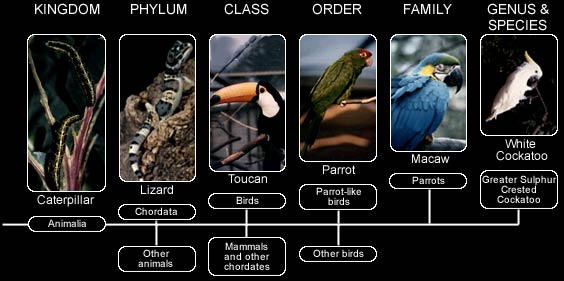Biosphere Contents
2. Diversity
Taxonomy and systematics provide names for living things and classify them in family trees reflecting both their current relationships with living species, and their evolutionary origins
Each species has a unique name, shared by no other species. The current system originates from the work of Linnaeus, a Swedish botanist. The scientific name of each species is in two parts, with Greek or Latin derivations. The first part of the name always starts with a capital letter, and identifies the genus - a group of one or more closely related species. The second part of the name refers to an individual species, and is only used in combination with the generic name. Man is called Homo sapiens and is the only living species in the genus Homo. We know from fossils that in the past there were other species in the genus, such as Homo habilis, which are now extinct. Just as different species of humans are grouped within a single genus, so groups of genera can be grouped together to form larger and larger groupings of progressively less and less closely related species. Each level has a separate name, with Species, Genus, Family, Order, Class, Phylum, Kingdom and Domain the most commonly used groupings.

How are living things classified?